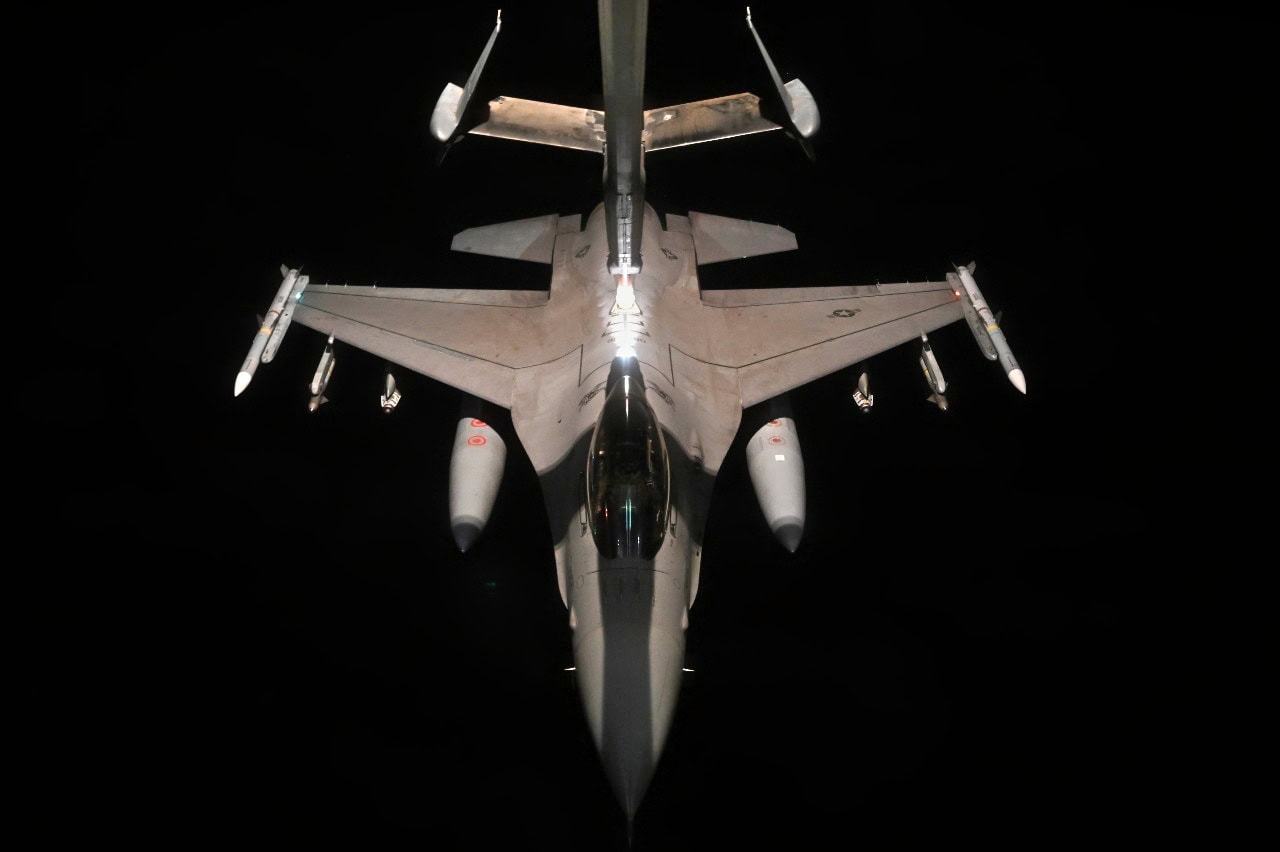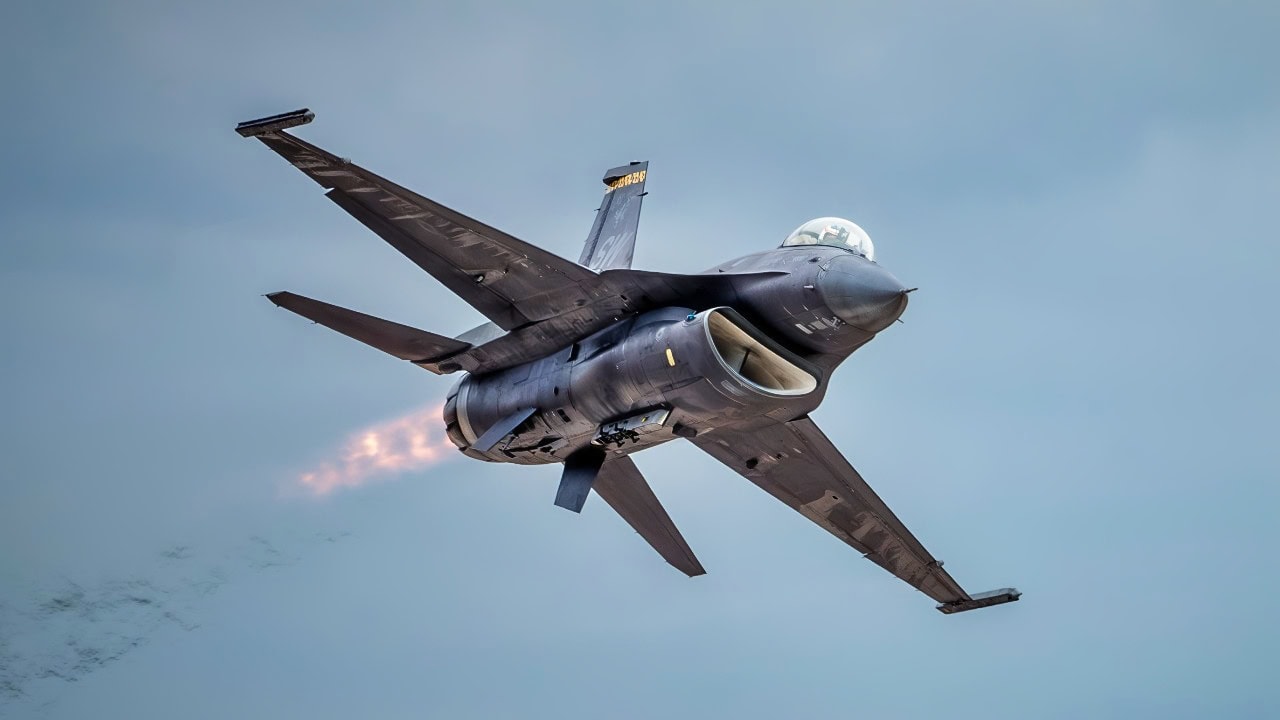Article Summary: Ukraine’s deployment of F-16 Fighting Falcon fighter jets significantly strengthened its air defense capabilities against Russian aggression. These versatile fighters, praised for maneuverability, advanced avionics, and precision strike capabilities, notably enhanced Ukraine’s air defense, intercepting Russian drones, missiles, and providing valuable ground support. However, the recent halt in U.S. aid—including critical intelligence sharing and spare parts—poses severe operational challenges.
Ukraine’s F-16 Jets Face Crisis Without U.S. Support
The deployment of F-16 fighter jets in Ukraine has marked a significant shift in the dynamics of the ongoing conflict with Russia. These advanced aircraft, known for their versatility and combat effectiveness, have introduced new capabilities to the Ukrainian Air Force.
However, earlier in March this year, it was announced that the US would halt any assistance to Ukraine, even intelligence-sharing operations. With this announcement, the fate of Ukraine’s F-16 fleet is in jeopardy.
Introduction to the F-16 Fighting Falcon
The F-16 Fighting Falcon, developed by General Dynamics (now Lockheed Martin), is a single-engine, multi-role fighter aircraft. It was designed to be a highly maneuverable, cost-effective solution for air superiority and ground attack missions.
Key features of the F-16 include a frameless bubble canopy for enhanced visibility, a side-mounted control stick for better maneuverability, and a fly-by-wire flight control system that allows for precise handling.
How has the F-16 Fared so far?
The introduction of F-16s into the Ukrainian Air Force has brought several advantages. These jets are equipped with advanced radar systems, electronic warfare capabilities, and a wide array of weaponry, including AIM-120 AMRAAM missiles and GBU-39 Small Diameter Bombs.
These features have enabled Ukrainian pilots to engage Russian aircraft and ground targets with greater precision and effectiveness.
From what I can gather, it seems that the F-16 has mainly been used for air defense around large, populated areas. As Ukraine’s supply of air defense launchers and missiles grows more depleted, the F-16 provided much-needed support.
With powerful jammers and advanced air-to-air missiles, Ukraine’s air force could more effectively defend itself against Russian missile/drone raids.
Tactical and Strategic Impact
The deployment of F-16s has had a profound impact on the tactical and strategic landscape of the conflict. On a tactical level, the F-16s have provided Ukraine with a significant boost in air combat capabilities.
Their superior maneuverability and advanced avionics have allowed Ukrainian pilots to challenge Russian air superiority effectively. The jets’ ability to perform high-g maneuvers and maintain high speeds has given them an edge in dogfights and air-to-air engagements.
Strategically, the presence of fighters sent a strong message to Russia and the international community. It signifies Ukraine’s growing military capabilities and the increasing support from NATO allies. The psychological impact of seeing advanced Western fighter jets in Ukrainian skies cannot be underestimated. It has bolstered the morale of Ukrainian forces and demonstrated the commitment of Western nations to support Ukraine in its fight against Russian aggression.
Training and Integration
Integrating F-16s into the Ukrainian Air Force has required extensive training for both pilots and ground crews. Ukrainian pilots have undergone rigorous training programs in NATO countries to familiarize themselves with the advanced systems and capabilities of the F-16. This training has been crucial in ensuring that the jets can be operated effectively and safely in combat situations.
Ground crews have also had to adapt to the maintenance and logistical requirements of the F-16. The jets’ sophisticated systems require specialized knowledge and equipment, necessitating significant training and infrastructure investment. Despite these challenges, the Ukrainian Air Force has made substantial progress in integrating the F-16s into their operations.
The US is Pulling the Plug
After an explosive meeting between US President Trump and Ukrainian President Zelenskyy, the US announced that all aid to Ukraine would cease, including intelligence sharing. This is a significant turn for the worse for Ukraine. Supplying almost 50% of military and financial aid donated to Ukraine, the US has been a significant factor in Ukraine’s survival, and without US support, Ukrainian F-16s could lose their effectiveness.
The US provided information on Russian positions and attacks, which helped Ukraine know where and when to strike. Without this crucial intelligence, Ukraine’s fighters don’t know where to strike or when to expect new attacks. Furthermore, the US frequently updates the software for the F-16’s radar and jamming systems. With these updates on pause, Ukraine’s jets are at a major disadvantage in the face of adapting Russian jets.
Additionally, the US is a major supplier of F-16 spare parts and munitions. With American support cut off, repairing and maintaining Ukraine’s F-16 fleet will be much more difficult. While other NATO countries also use F-16s, none have as large of a supply of spare parts as the US.

A U.S. Air Force F-16 Fighting Falcon assigned to the 77th Expeditionary Fighter Squadron, receives fuel from a KC-10 Extender assigned to the 908th Expeditionary Air Refueling Squadron, over an undisclosed location within the U.S. Central Command area of responsibility, Dec. 2, 2022. F-16 aircraft routinely conduct presence patrols within the CENTCOM AOR to reassure allies and ensure regional security. (U.S. Air Force photo by Staff Sgt. Gerald R. Willis)
Ukraine’s F-16s are in Trouble
The future of Ukraine’s fighter fleet is currently looking grim. With US support drying up, Ukraine will face many challenges in maintaining and updating its handful of F-16s. While the jet still offers many advanced capabilities and is still a much-needed asset for the Ukrainian Air Force, without US-provided intelligence and software updates, the fighter will find itself at a major disadvantage to the ever-adapting Russian Air Force.
Currently, Ukraine can only hope that the US will resume its support or that Europe will somehow be able to fill the gap. Given the state of Europe’s defense industry, America is the best hope Ukraine has for defending its territorial integrity.

F-16 Image: Creative Commons.
About the Author: Isaac Seitz
Isaac Seitz, a 19FortyFive Defense Columnist, graduated from Patrick Henry College’s Strategic Intelligence and National Security program. He has also studied Russian at Middlebury Language Schools and has worked as an intelligence Analyst in the private sector.

